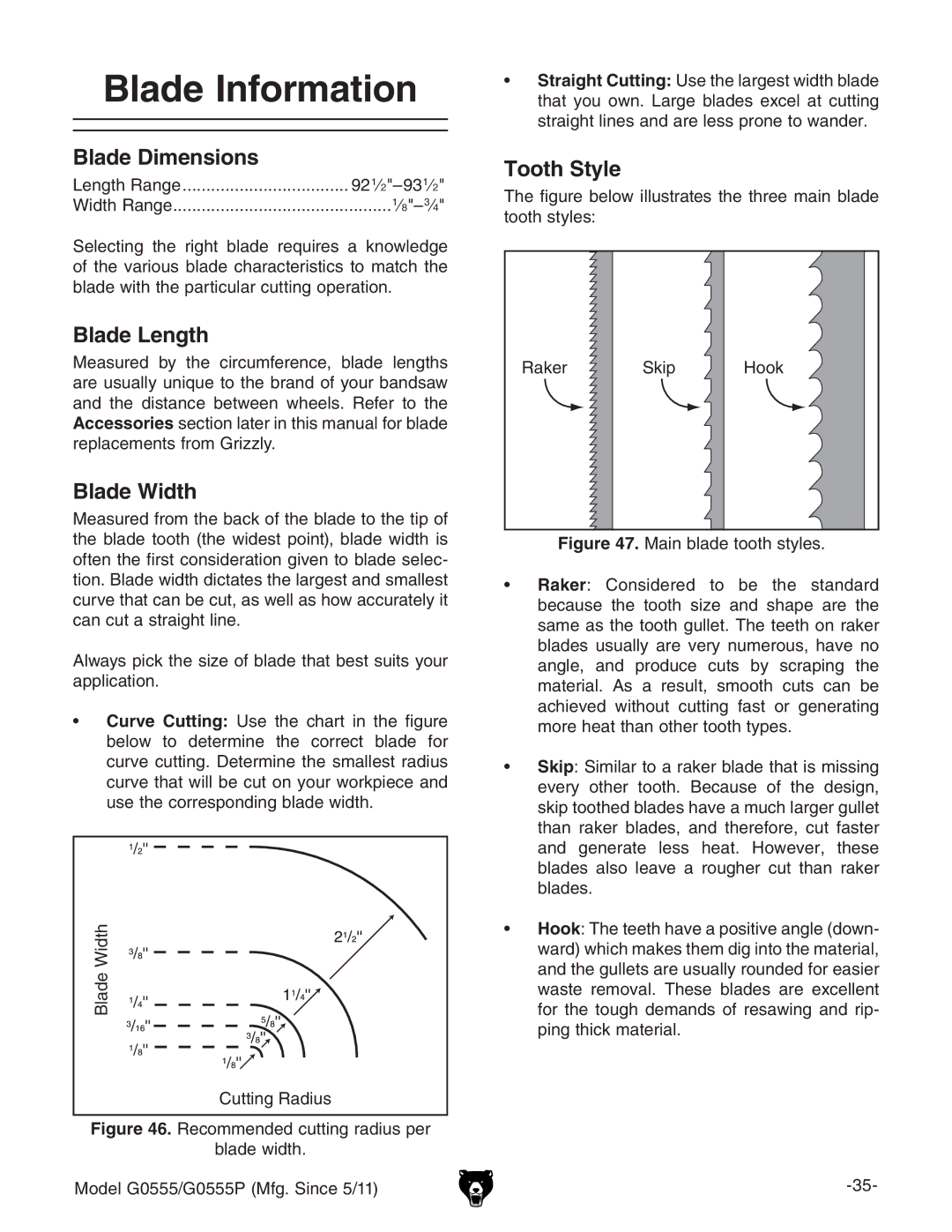
Blade Information
Blade Dimensions
Length Range | |
Width Range |
Selecting the right blade requires a knowledge of the various blade characteristics to match the blade with the particular cutting operation.
Blade Length
Measured by the circumference, blade lengths are usually unique to the brand of your bandsaw and the distance between wheels. Refer to the Accessories section later in this manual for blade replacements from Grizzly.
Blade Width
Measured from the back of the blade to the tip of the blade tooth (the widest point), blade width is often the first consideration given to blade selec- tion. Blade width dictates the largest and smallest curve that can be cut, as well as how accurately it can cut a straight line.
Always pick the size of blade that best suits your application.
•Curve Cutting: Use the chart in the figure below to determine the correct blade for curve cutting. Determine the smallest radius curve that will be cut on your workpiece and use the corresponding blade width.
Blade Width
Cutting Radius
